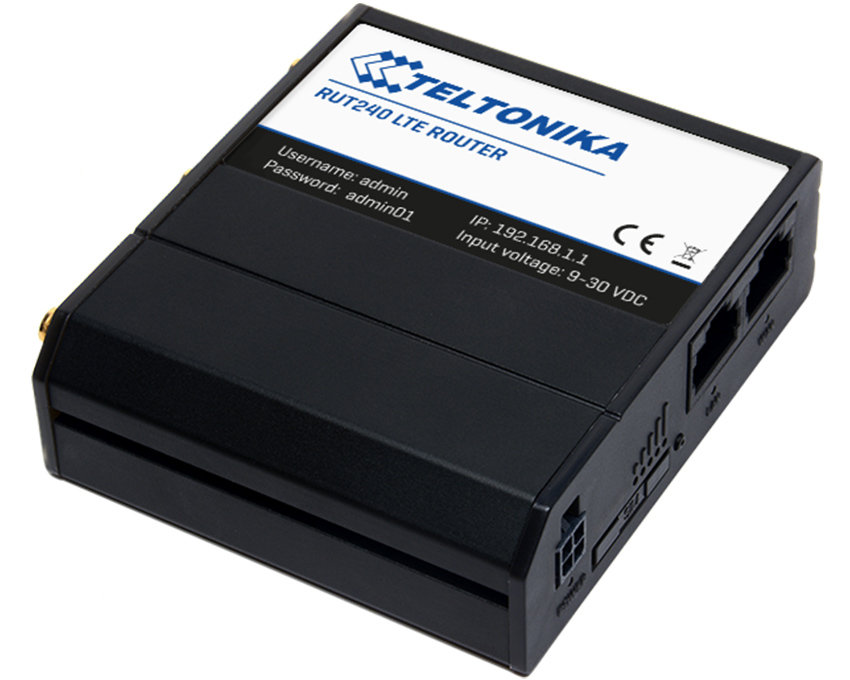Overview
Working from home has been working well for me for the past year, with a thankfully stable and decently fast Internet connection. However, a recent service issue has led me to try some alternatives and finally set up a backup connection using a Teltonika RUT240 router with a 4G failover. I also cover having a look at the business packages provided by the ISP.
And the connection goes down
The Connection to server lost dialog in Perforce was the early warning to my family’s “Is the Internet down!?” queries coming from downstairs.
The Internet’s gone, guys. There’s nothing but a wasteland out there.
Right, lets try to get everyone back online…
Backup alternatives
Mobile phone hotspot
My original plan in case of a service breakdown was to use my phone as a hotspot, with its 60GB data plan (it was one of those very strange situations where the 60GB plan was cheaper than the 8GB plan, go figure!)
However, there are some issues with this approach:
- The 60GB data limit might be enough for many jobs, but it’s not sufficient for games development as I can exceed that in a single day.
- Several services just didn’t work, such as the work VPN (or EVE Online, for that matter…). Ports were either being filtered by the carrier or there were issues with the IPv6 my mobile was assigned, compared with the usual IPv4 I have from my landline.
- It’s not just me. Both my wife and step-son need access to the Internet and they have much smaller data plans than I do.
BT’s emergency 4G mini hub
This isn’t something I was aware of and it might be a new service provided by my ISP after the pandemic took hold, but when I reported the fault they’ve shipped me a 4G mini hub by courier. It took about 28h to arrive.
It’s a nice package: it’s a USB/wireless access point with an unlimited data plan. It stays active while the fault is being resolved, then BT turns it off after a few days. You keep the device, they’ll just turn it back on if there are further issues.
A couple of things to keep in mind:
- It doesn’t really integrate nicely with a pre-existing network. You might be able have a computer share it’s internet connection after connecting the mini hub with it, but it’s not transparent.
- If it’s your first time having an issue, you’ll have to wait for it to be delivered.
- You’ll need to contact Customer Support for them to re-activate if there are issues in the future.
- ISP specific but worth checking if yours provides anything similar.
A router with a 4G failover
Certain router models support a 4G failover: when they detect the main connection has dropped, they’ll switch to a mobile connection using a SIM card.
There are some options out there and after some research I ended up going with a Teltonika RUT240. It is a solid bit of hardware in a small package with a remarkable set of features, although it is definitely more on the Professional than the Consumer side of hardware: if you aren’t familiar with networking it might be overwhelming.

The documentation is thorough and in addition to the 4G failover, it allows for setting up OpenVPN on the router and sending SMSs when certain events trigger (such as swapping to the 4G backup). The feature set is larger than I’ll never need and can cope with far more complex setups than what I have at home.

While my ISP was trying to track down the fault with the junction box, I saw the router swap to the failover a few times. It was a smooth enough process that did not interfere with my work and it swapped back once the connection was restored.
A more plug & play alternative might be the NETGEAR 4G LTE LB2120 or the TP-Link ArcherMR400. However, I haven’t tried those myself so you’ll need to do some more reading. All three devices are around the £120 mark.
In all devices you’ll need a SIM card, with enough data for your requirements. They would replace your current router, or your router would need to be switched to bridge mode. My final network layout looks like this:

Business package
Now, this is something that I stumbled on after I set up my Teltonika router, which made me feel somewhat silly: have a look at your ISPs business offerings. I stumbled on them while writing this post, and in my case the Business package was cheaper than the Residential package and it included a 4G failover with unlimited data.
Speak with Customer Support: even on a Residential package, they might add the 4G failover to your account. Obviously, your mileage may vary, but it might be a much cheaper alternative than what I assembled.
Conclusion
If available and affordable, a Business package from your ISP with a 4G failover is likely the most reasonable option. Alternatively, setting up your own with a Teltonika RUT240 provides a reliable backup to keep you going through unexpected service disruptions.
Be First to Comment